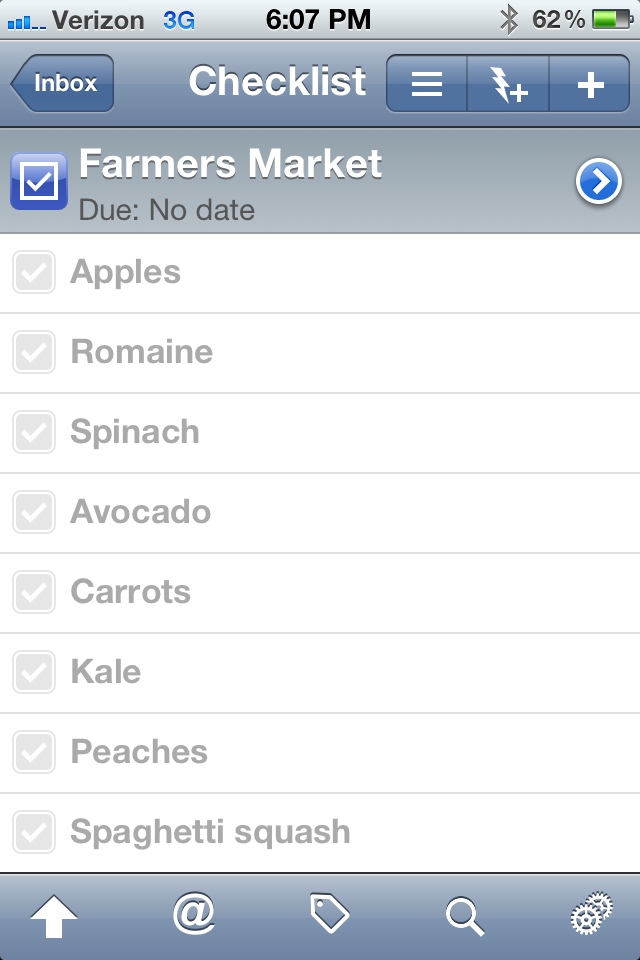Last year, my mom was complaining about the quality of her local grocery store. She still liked their produce, but their meat offerings had been dropping in quality. There was a newer grocery store that opened equidistant to her house, and she just switched completely to the other store. I asked her why she didn’t shop at both stores, since each offered foods she liked, and she explained it was just too much work.
In contrast, Sarah and I shop at three to four grocery stores. There’s a farmer’s market down the street and the big box grocery store up the street; we get most of our produce and staples from each of those, respectively. Once a month we hit Costco for meat, and freeze enough meat to give us meals for quite a while. And we have found that spices and non-mainstream ingredients (like Asian noodles, various Indian spices and curries), it’s easiest to hit the local international/Asian grocery store. Our shopping is never just hitting one store and calling it good, but we also spend far more time planning out our meals.
Apparently, we are not alone. Forbes is reporting that “millenials” visit more places, seek out fresher foods, and shop more locally than the boomer generation. Essentially, we don’t just hit up the local Shop Rite and call it a day, and that means we are changing the marketing game. If you read the source report that Forbes cites, one of the key points is that traditional grocery stores are in for a rough ride. On the upside, this may also mean that we will see stores implementing fresher, more local foods. Money talks, and if shoppers are heading elsewhere, that’s a signal it’s time to make changes to bring them back.
Here’s the rundown from Forbes:
The Millennials have much less brand loyalty and are more willing to engage in different distribution models to find food. This generation is not afraid to purchase food online and to look outside of the traditional grocery store to find what they want. Boomers on the other hand were more brand loyal and shopped at the grocery store for everything.
Millennials are less married to the ‘one stop shop’ concept of grocery store shopping.
Specialty (ethnic, organic / natural, and fresh) sellers – in shops and online – will benefit from changes in preference.
Branded processed food manufacturers will be “losers” in the new food paradigm.
Millennials – while focused on paying as little as possible for products – are also much more willing to pay more for specific attributes in food, such as organics / natural, ethnic and specialty foods.
One downside to so much grocery store hunting is properly preparing a grocery list. I use Todo on my iPhone and iPad, and I would be lost in the store without it. While technology mostly gets referenced as an education tool in food shopping, I think that easier access to shopping apps and task lists make it easier to jump around so much for groceries. I have undated “checklists” in Todo for each of the stores we visit regularly. Whenever we realize we are out of, say, paper towels, that goes on my Shop Rite checklist. If it’s almonds, I put on my Costco one. The idea is that I have specialized lists for each store, and from there I can make sure I get what I need without getting bogged down in “do I buy this here or at the next stop” confusion. While you can use grocery-specific apps for the same purpose, I like Todo, and it gives me one central place for everything that needs to be accomplished. If I had to juggle an app for my everyday tasks, an app for my groceries, and another app for meal planning, I would never keep up properly, but in Todo I can have them all neatly sorted in one place.
In the end, you can eat healthily whether you shop in one store or several. But there are advantages to shopping around, and while it can be a fair bit of work, it can be more rewarding seeking the freshest, tastiest, and in many cases, local, food available. What struck me as interesting is how closely Sarah and I hew to the demographic outlined by Forbes, and how much it reflects most of our peers as well. It certainly seems like a trend that is likely to stick, and hopefully that creates waves that improve the food and grocery industry!
If you shop around to several stores for your groceries, let us know in the comments: what age range are you in, and how do you organize your grocery shopping? Like I said above, Sarah and I are in the 31-35 range, and we use Todo…what about you?


